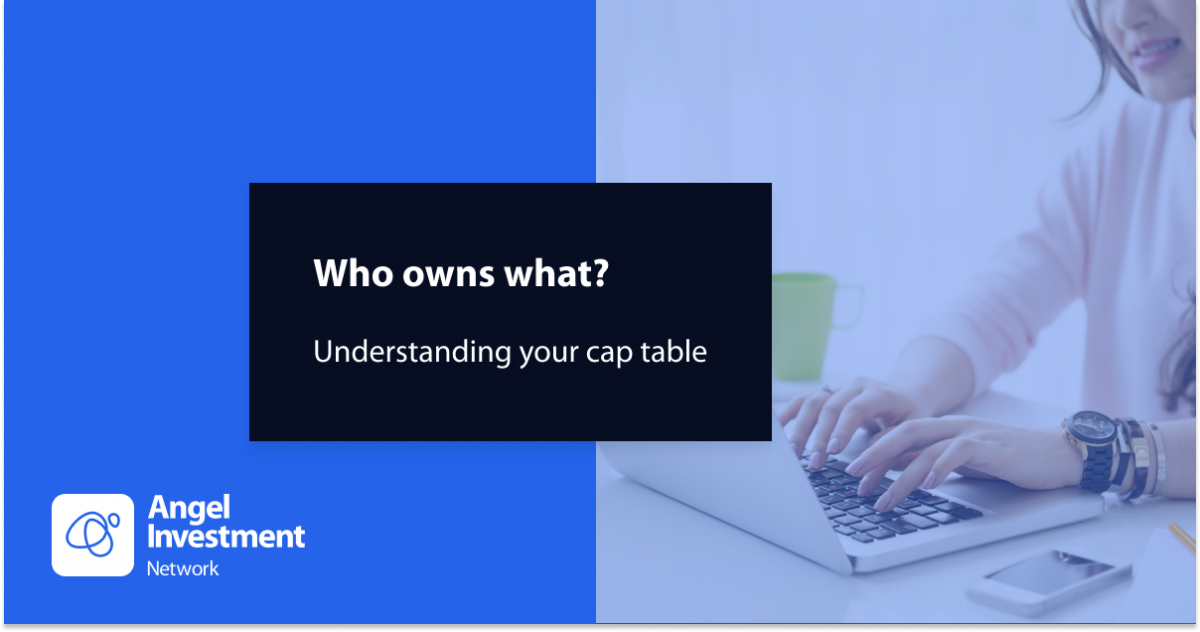
Who owns what?
In this guest blog, Carine Schneider, President of Astrella, providers of leading cap table management software, gives a 101 on understanding your cap table, and some of the key risks to avoid when it comes to share ownership.
WHAT YOU NEED TO KNOW ABOUT PRIVATE COMPANY OWNERSHIP
So, you’ve got a game-changing idea that’s going to disrupt your industry and you are ready to raise funding and change the world. Congratulations! You’re ready to move fast and break things, to turn it up to eleven, to do what most won’t, to live like most can’t. You’re ready to build your very own rocket ship
And we love that about you. But take a breath.
The startup landscape is a wild world. Sobering statistics are often tossed around about the single-digit percent of startups that make it, with relatively few companies receiving venture capital funding.
But there are steps you can take from the start to significantly increase your chances of success, from negotiating the initial agreement that lays out the foundations of your partnership with your co-founders to your five-year road map. Decisions you make now will determine how sustainably you grow, the quality of investors and investment you attract, and the level of control you maintain.
Let’s build that rocket ship on rock-solid foundations.
WHO OWNS WHAT?
“A lot of entrepreneurs don’t really
understand how the pie is divided,”
Carine Schneider,
President of AST Private Company Solutions.
Too many founders think it’s just slicing up the company and distributing (or selling) the pieces. They think ownership is locked in with a one-time decision that lays out clear-cut, unchanging percentages (maybe they’ve watched too much Dragon’s Den…). They may think they own half the company and will always have the final say in decisions that affect it.
All too many learn the hard way that things change.
Even in the simplest scenario, where you and a co-founder are splitting company ownership 50/50, you’ll need to put aside 10 to 15 percent for the employee equity compensation plan. So, the slices have gotten more complicated before you’ve even thought about accepting investments from multiple rounds of investors.
What’s more, regardless of share types and percentages, your board will make important decisions about your company’s finances, strategy, and even ownership (more on building your board in a future post!).
Equity is all the same… OR IS IT?
“Shares” sounds simple enough.
Except that the shares you and your employees hold in your company aren’t necessarily the same as the shares your investors will own. It’s important to understand the variables among different shares and share classes; the powers and responsibilities that come with them can vary significantly.
“Say you and I each own 100 shares of a private company,” Schneider says. “We can’t really compare that value until we understand when we each bought the shares, what kind they were, and the rights and privileges that came with those shares.”
Although this can get far more complicated, the first key distinction to understand is between common and preferred shares. Broadly, common shares – the kind you issue in your own company – come with voting rights and low or no dividends, while the preferred shares, which are what you may typically sell in priced rounds, usually do not have voting rights and pay higher dividends. In a private company, there is a lot of flexibility on the rights and privileges that can be assigned to different shares.
Experienced investors will negotiate preference items that affect how the shares are handled in the event of different outcomes, including at exit, which could be an acquisition or stock-market flotation, or maybe a liquidation.
Think of company ownership as a line of shareholders. You and your co-founder and your early employees were there first, so you will always be at the front of the queue, right?
Wrong.
The thing is, the people who set up chairs and camped out from the start (holders of commonshares) can get trampled by the investors (holders of preferred shares / share-classes) who showed up much later with more money.
Savvy early backers will try to negotiate anti-dilution clauses to keep their percentage from shrinking, even as later investors line up preference items to ensure their full amount is returned to them. At your company’s exit, you may be surprised to find yourself at the back of the line.
In short, ownership can be complex and not intuitive.
You need to make sure you always understand who has what type of shares, what the terms are, and what the implications are for your ownership.
You will be well served by lining up expert advisors who
can help you make sure you are making the best decisions for your company from the earliest steps. It’s also important to have access to a system that provides you with both exit as well as “next-round” modeling tools. Real talk: the incredible disappearing stake. There
OK, so seriously… WHO OWNS WHAT?
With all the complexity involved in ownership, how do you keep track of everyone’s place? Enter the capitalisation table.
The “cap table” is a tool that tracks company ownership data. In short, it determines that line of stakeholders by tracking their equity stakes over time. A good cap table means
no surprises.
A common mistake new founders make is waiting too long to create a cap table. Nearly as common—and just as harmful—is creating a poor (or inaccurate) one.
While a simple spreadsheet may give a snapshot of a moment in time in ownership, it can be dangerously inadequate. Spreadsheet files can get lost, or a simple typo can change your billion to a million. It’s important to use a robust tool. to store, track, and model ownership data that tracks the changes to ownership over time.
The cap table is one of the first things any potential investor will request when considering an investment. In addition to showing constant, real-time ownership data, it will model the changes to your ownership under different potential investment scenarios. “A smart investor is always going to want to look at the cap table, and a smart investor is not going to want to look at a cap table that comes from a spreadsheet,” Schneider says.
Companies raising capital through Angel Investment Network benefit from complimentary access to Astrella for up to 15 stakeholders, with the following code used during registration:
LAURENCE15
For more information about Astrella please click here.
About Carine Schneider
Carine Schneider, FGE, is the President of AST Private Company Solutions. She was honored in 2019 with the ProShare Award for Services to Employee Share Ownership, in 2017 as one of the 100 Influential Women in Silicon Valley (Silicon Valley Business Journal) and one of “17 Women to Watch” in 2017 by Brown Brothers Harriman.
Carine was invited to become a Fellow of Global Equity (FGE) in 2019. An experienced and well-connected leader in private market & global compensation industry. Carine was formerly the President, NASDAQ Private Market Equity Solutions
For any equity related queries or cap table assistance contact Laurence@Astrella.com.
Related posts
For this edition of #SixtySecondStartUp we have Jack Oswald, founder of Cancha, he shares how his experience as a professiona...
Read more
arrow_forwardHealthTech startup PinPoint Data Science has successfully raised over £1m, supported by Angel Investment Network (AIN). The ...
Read more
arrow_forwardAngel Investment Network (AIN), has announced impressive annual growth, with annual revenues up 5% year on year and the last ...
Read more
arrow_forward


